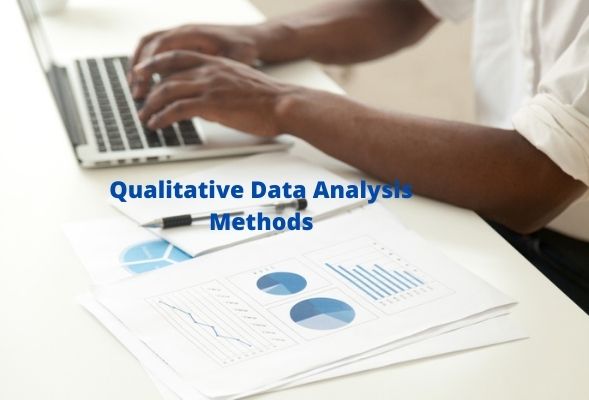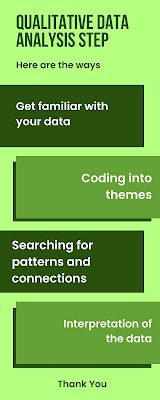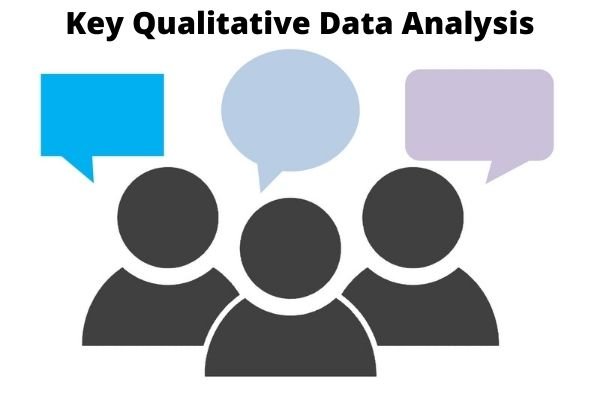Qualitative Data Analysis Methods Styles And Ways
As data is an inestimable source of business sapience, knowing what are the colorful qualitative data analysis styles and ways has pivotal significance.
There are different approaches, types of statistical styles, strategies, and ways to dissect qualitative data.
Choosing the stylish way and fashion depends on the nature of your data and the pretensions set in qualitative exploration.
On This Runner:
- What's qualitative data analysis? Description.
- Ways and styles used in qualitative data analysis list and explanation.
- Infographic in PDF.
WHAT IS QUALITATIVE DATA ANALYSIS Methods?
Let’s Define It:
Qualitative Data Analysis (QDA) involves the process and procedures for assaying data and furnishing some position of understanding, explanation, and interpretation of patterns and themes in textual data.
Just to recall that qualitative data is data that can’t be expressed as a number. Qualitative data correspond to words, filmland, compliances, and symbols, not figures. For further details see our post qualitative vs quantitative data.
Top 4 Data Analysis Techniques
Generally, QDA has 4 Main Way
.
- Get familiar with your data. You need to read andre-read the data, write down detailed notes and prints, and decide which pieces of data retain value.
- Coding into themes – this means producing orders and subcategories. Each order is an illustration of some thematic idea. The thing is to group data associated with some thematic idea which allows them to be examined together. The list of figure themes represents your first set of canons.
- Searching for patterns and connections – looking for the relative significance of data and relating connections between data sets or themes.
- Interpretation of the data and drawing conclusions.
QUALITATIVE DATA ANALYSIS Styles AND Ways
There are a wide variety of qualitative data analysis styles and ways and the most popular and best known of them are
1. Predicated Theory Analysis
The predicated analysis is a system and approach that involves generating a proposition through the collection and analysis of data. That proposition explains how an event or aspect of the social world “ works”.
The predicated proposition is one of the most popular qualitative strategies that leads to a general, abstract proposition of a process or action predicated on the views of people that share in a study.
The main point of the predicated proposition, which differentiates it from other qualitative data analysis styles is its focus on proposition development.
Predicated proposition fashion is veritably suitable to use, especially when you have to dissect large amounts of unshaped qualitative data. (to know what unshaped data mean see our post unshaped data exemplifications).
Crucial data collection styles and ways that Predicated proposition uses
- Interview with open-concluded questions
- Focus groups
- Party observation
- Study of textbooks
Note: data analysis in Predicated proposition happens at the same time as data collection. It means you shouldn’t stay until all your data is collected and also dissect it. The styles have to be flexible and change when the data show a new proposition or direction.
2. Content Analysis
Content analysis is one of the most extensively used qualitative data ways for interpreting meaning from textbook data and therefore identifying important aspects of the content.
It includes processes and procedures for the categorization of textbook data for the purpose of bracket and summarization.
The textbook can be colorful formats similar as documents, filmland, videotape, audio, etc.
The most popular operation of content analysis currently is in assaying the social media field. It's used to quantify patterns and trends in social media communication.
You'll be surprised with the broad range of content analysis software results moment. They help you to examine nearly any type of unshaped textbook data similar as business documents, emails, social media, exchanges, commentary, news, blogs, and much further.
In addition, the machine learning bracket algorithms can significantly increase the quantum of textbooks which can be labeled and classified.
Crucial purposes of content analysis are:
- To find out important aspects of the content.
- To present them in a clear and effective way.
- To support some argument.
In fact, content analysis isn't a single system. It has popular ways and approaches conventional, directed, or summative. The main differences among the ways are the origins of canons and rendering schemes.
Your Guide to Qualitative and Quantitative Data Analysis
3. Narrative analysis
Narrative analysis is also one of the best-known qualitative data analysis styles and ways.
Narrative analysis is an approach to assaying different stories people produce. The purpose is to understand how people form meaning in their lives as narratives.
Hyascka, It uses colorful types of stories similar to autobiography, family stories, prints, life experiences, as the units of analysis. It focuses on the ways in which people produce and use different stories to interpret and explain the diurnal life and the world.
What can we discover from the narrative analysis system?
- An intriguing knowledge and understanding about people, their culture, and how they're changing.
- It helps us make sense of history and produce meanings of it.
- Helps organizations information about how humans interpret events.
- Show us the values and beliefs that guide those interpretations.
A long number of data collection styles can be performed. Data can be in the form of journal records, interview reiterations, compliances, autobiographical jotting, documents, liar, particular accounts, letter jotting, etc.
4. Converse Analysis
The converse analysis is about assaying the natural being talk – spoken communication and all other types of the textbook.
It studies the meanings that the use of language and spoken relations produce and the surrounds of these meanings.
This system not only analyses dispatches but also takes into consideration the social environment in which the dispatches be.
This fashion can also include analysis of written textbooks, similar to emails or body language.
Converse analysis is a field of linguistics that focuses on the part of the language in the structure of social reality.
Generally, converse analysis brings together the analysis of language use and the analysis of situations.
5. Framework Analysis
The framework is one of the qualitative data analysis styles that are gaining fashionability across multiple areas, including health, social policy, and psychology.
It approach is used to organize and manage data with helping of the process of summarization. It results in an important and flexible matrix that allows you to dissect data both by theme and case.
The matrix consists of rows (cases), columns ( canons), and cells of summarised data. Therefore it provides a structure into which you can totally cut the data, to dissect it by case and by law.
Using theme display, frame fashion lets you dissect your data thematically and to perform exploratory analysis of the entire dataset.
Framework analysis identifies parallels and differences in qualitative data, thereby aiming to draw descriptive or explicatory conclusions grouped in themes.
Framework analysis is one of the easiest qualitative data analysis ways.
It has the veritably clear way you can follow and makes largely structured labors of summarised data.
Conclusion
You have a good range of qualitative data analysis styles to choose from, in order to achieve the main purpose of qualitative analysis – to explain, understand, and interpret data.
They've enhanced people’s capability to perform data analysis by handling multiple means and ways of collecting, sorting, presenting, and assaying raw data.






No comments:
Post a Comment